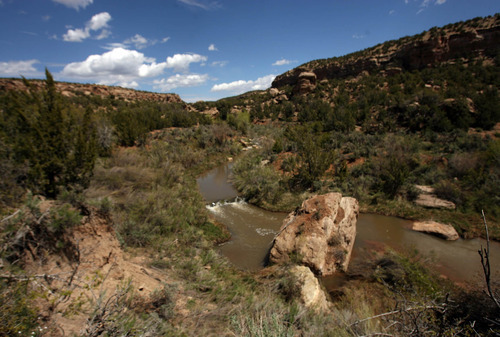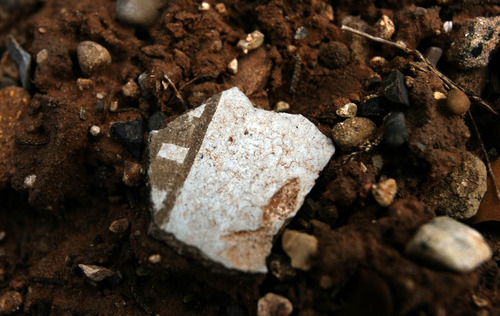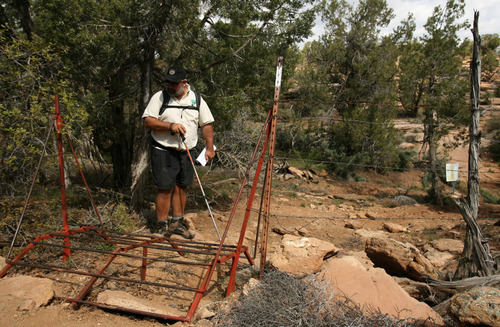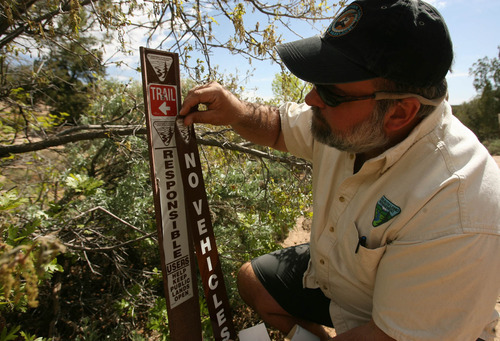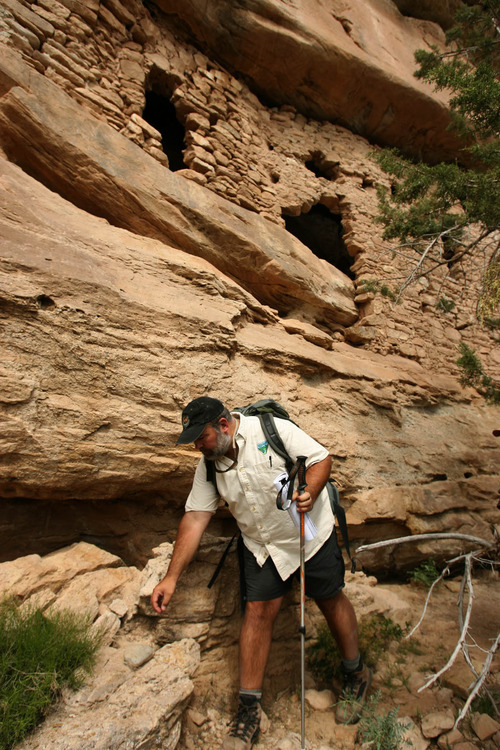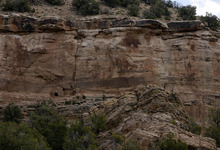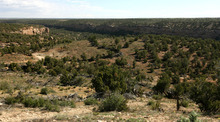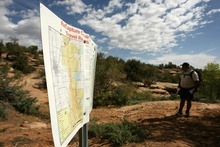This is an archived article that was published on sltrib.com in 2011, and information in the article may be outdated. It is provided only for personal research purposes and may not be reprinted.
A southeastern Utah ATV trail illegally built by two Blanding men may yet become a legitimate motorized route for people who want to view ancient cliff dwellings.
The U.S. Bureau of Land Management is considering a San Juan County application for the right of way in Recapture Canyon.
Such a prospect outrages people who prefer to protect archaeological sites by keeping them remote. They can't understand why the BLM would reward a criminal action that last month resulted in $35,000 in fines to the trail builders.
But many residents in Blanding and San Juan County see reopening the illegal trail — and making it legal — as key to unlocking the region's historic wonders for locals and tourists.
The key attractions are the Ancestral Puebloan cliff dwellings, well away from the trail, said Bob Turri, a Monticello off-roader who represents the county in occasional negotiations with the BLM and competing groups. He doesn't see the risk of much looting or vandalism, because few ever climbed to the sites before the government closed the trail in 2007.
"You pull out your binoculars and observe those things, and 'ooh' and 'aah,' and you move on," Turri said. "It gives people an opportunity to see those sites and have an understanding of them without being that close to them. I believe that if that trail was ever authorized, it would generate a lot of national interest."
No one disputes that this is the prevailing view in San Juan County, where "Wanted, Dead or Alive" posters went up near the canyon targeting Great Old Broads for Wilderness, a Durango, Colo., group that had been monitoring the trail for illegal use.
But environmentalists, led by the Great Old Broads, say it doesn't matter: ATV traffic endangers cultural riches and rogue trail-busting should be discouraged. They add — and the BLM concurs — that the trail also runs directly through archaeological sites that suffered damage.
"Why on earth would BLM legitimize what was a criminal act to begin with?" asked Rose Chilcoat, associate director of the Great Old Broads. "It's a little like giving the bank robbers the money they stole from the bank."
Recapture Canyon is on Blanding's northern outskirts. The city allows ATV use on the streets. A potential canyon trailhead behind the city's visitor center offers quick access to the canyon. The county wants public access across four miles of the illegally built trail into the best viewing sites for cliff dwellings, but would leave other parts of the canyon closed.
For years, the canyon was open to travel, although riders say it was rough, brushy access for four-wheelers, and was mainly left to dirt bikes following no particular trail. Then, in 2005, Kenneth James Brown and Daniel Lee Felstead — armed with picks, shovels and other tools — carved a trail that would handle ATVs. The trail includes a bridge. They did it without BLM approval. The agency later closed the trail because it damaged remnants of pit houses and underground storage containers.
Then the county, whose representatives say BLM officials at the time assured them the trail would reopen, applied for a right of way across it. The agency is considering that request and has assembled a working group that includes riders, environmentalists, archaeologists and local and state officials. The government also has sought comment from American Indian tribes.
Some in the working group believe restricting access to hikers and horseback riders is the best way to protect the sites. Others say allowing more people to ride there puts more eyes in the canyon to discourage vandals. One thing they agree on, according to BLM Canyon Country District Manager Shelley Smith, is the need for monitoring to determine how people who visit the sites get there.
If the BLM reopens the trail, it may reroute parts away from the canyon-floor archaeological sites, Smith said. Regardless of whether the federal government grants a county right of way, she said, it cannot legally reopen access until damage to cultural resources is repaired to the extent possible. That likely means, at least, installing erosion controls to thwart runoff that could threaten the sites.
The damage has been estimated at $300,000. Most of that cost would be for labor that the BLM would pay anyway, Smith said. But some would be for materials, and the $35,000 in fines may go toward that tab. If the county or anyone else wants the trail to reopen before the agency's budget constraints allow, she said, they may have to help with the restoration.
First, though, the BLM will seek public comment on alternatives — including one for no motorized trail access — and determine whether to grant the right of way at all. Although built illegally, Smith noted, the trail is "not inconsistent with the land-management plan" for that area.
Great Old Broads prefers closing the trail to motorized use, which members say would not hinder Blanding residents from resuming normal practices. Most never could reach the canyon by ATV anyway, Chilcoat said, so a continued closure would not pose a new barrier.
"Nobody's denying them the access that they've always had," she said. "Horseback. Foot. Get down there and enjoy it."
Former County Commissioner Lynn Stevens sees it differently. Sure, it was always difficult to access the canyon on four wheels, he said, but off-roaders bring shovels to help repair trails when they see erosion, and he doesn't believe they will cause any more damage than hikers.
Meanwhile, he said, an ATV trail would give Blanding residents and visitors easier access to archaeological gems — and just minutes from town.
"It's not a strenuous ride for people who are not familiar with four-wheelers," Stevens said, and that could mean more people get to enjoy the experience."


